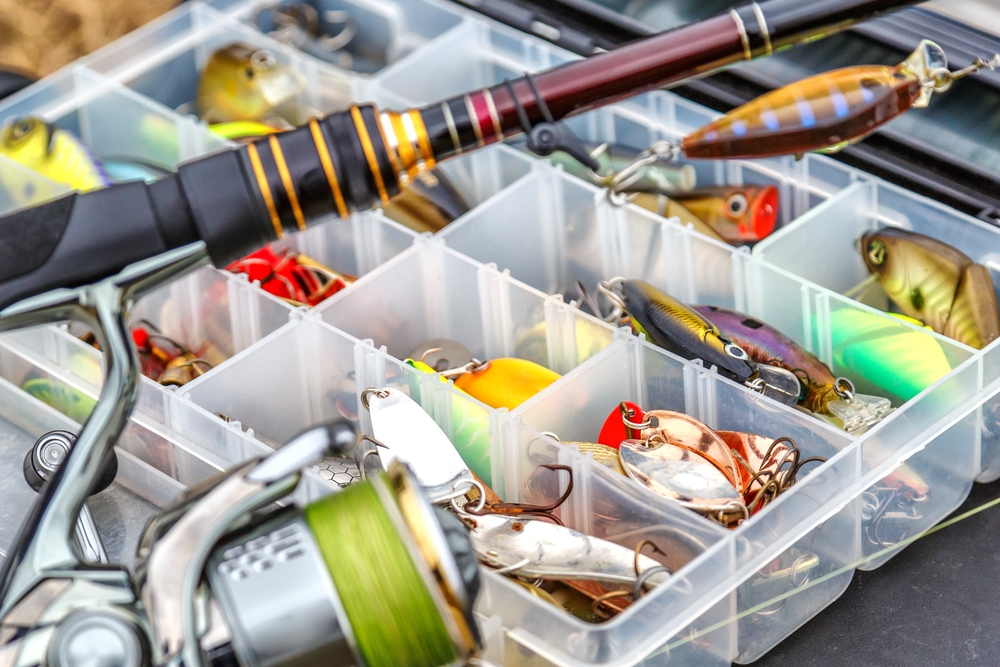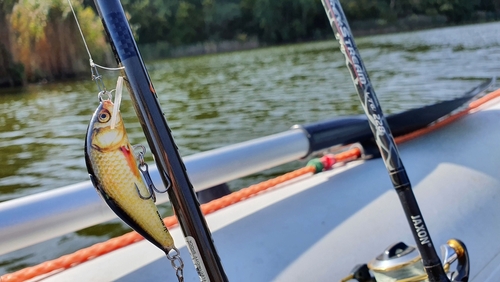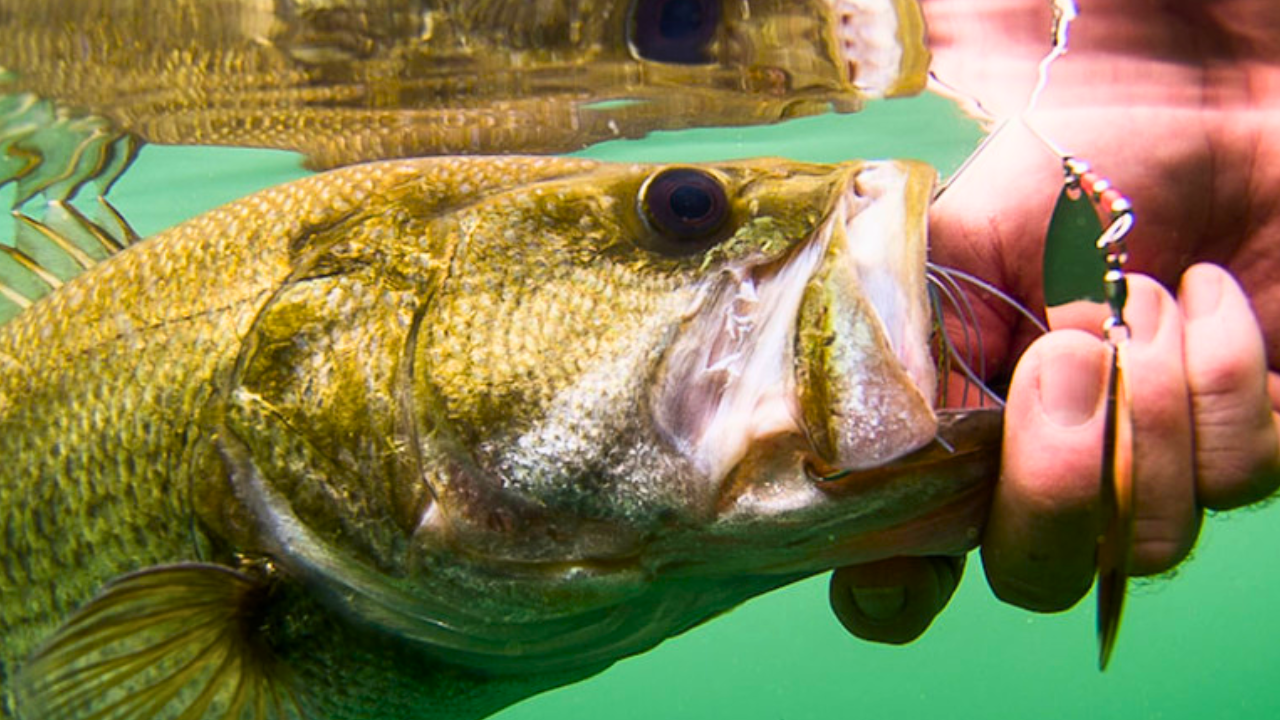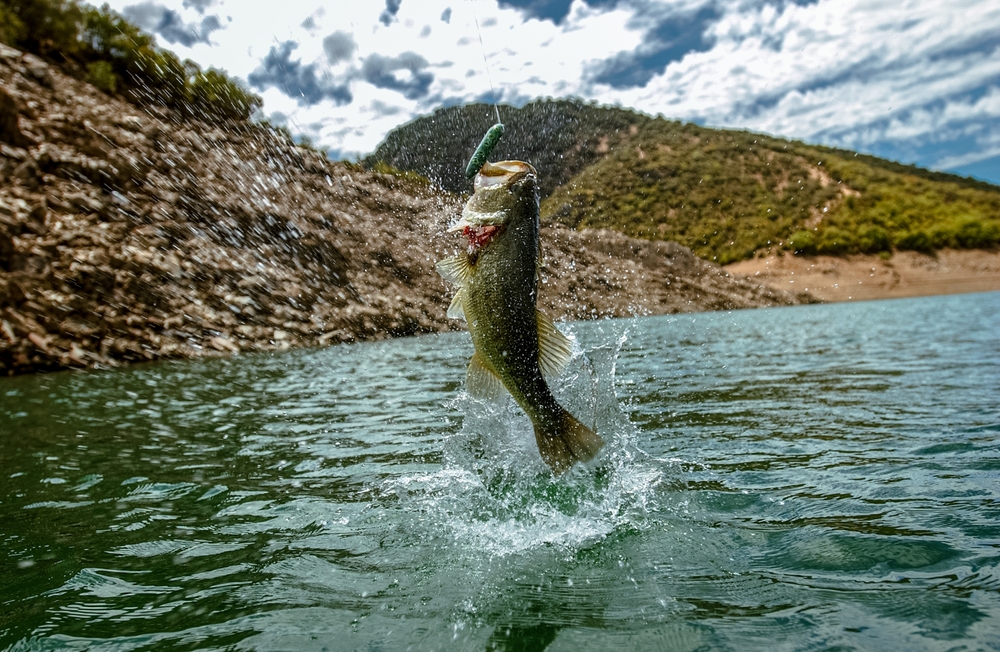Utilizing Spinnerbaits for Bass: An In-Depth Look
In the world of bass fishing, new lures seem to come out every day, and they all promise to be the latest big thing that will completely change your fishing experience. Some of them end up being pretty good, some of them fail miserably, and none of them ever really end up being as impactful as promised.
However, there is a handful of staple lures that have been around for decades, and they still make up the most effective lures in nearly any tackle box that has them. You’ve got spoons, crankbaits, jerk baits, soft-plastic worms and grubs, jigs, and our topic today, the common spinnerbait.
You’ll be hard-pressed to find an angler who doesn’t have at least one of these in his tackle box, and unless you’re getting primed for your first fishing trip, you have probably used one already.
However, a lot of new anglers only use them with a basic cast and straight retrieval pattern, and they’re capable of so much more.
Today, we’re going to go over all the fine details to make sure you get the most out of spinnerbaits for bass fishing.
Newsletter Signup
What is a Spinnerbait?
Spinnerbaits come in two main forms, but when we’re talking about bass fishing with one, we are usually talking about a basic angled wire frame lure with a built-in jig head, hook, and free-moving "blade”. Most of them also include a “skirt” made up of many strands of thin silicone cords that stretch and compress as they move through the water.
This is different than the traditional inline spinner or "Rooster Tail" which is also called a spinnerbait sometimes. Those can be great for bass fishing, but they’re also used for trout, pan fishing, and other small species, and they’re used in very different ways.
While an inline spinner is a straight wire with the blade rotating right next to the barrel-like body and a treble hook on the end, a spinnerbait has an angled wire frame that suspends the blade a couple of inches above the body, bends at the point where the line ties on, and straighten out for a jig head and hook.
These are lures that can be purchased in any price range. You can find extremely cheap ones in your local big box store’s dollar bin, and that’s a great way to get started, or you can find far more extravagant ones that can cost ten to twenty dollars or even more.
At the end of the day, the price doesn’t matter too much in terms of how you’ll use the lure, and it mostly determines the size options, color patterns, and quality options available.
That’s another reason spinnerbaits tend to be popular with anglers of all levels. They can be as cost-effective and simple as possible, or they can be extremely lavish and worthy of a professional angler’s tackle box without any super noticeable effects on performance.
How Do Spinnerbaits Work?
Spinnerbaits have a lot more going on than you might think. While they’re fairly simple in design, they create three effects regardless of how you use them, and they have room for you to tweak them to your liking, too.
Here are the main ways spinnerbaits attract bass.
1: Flash and Vibration
First, we’ll cover the 3 primary ways they attract fish, and then we’ll move on to two cool adjustments you can make with aftermarket parts.
Flash is a key component, and it’s made by the blade of the spinnerbait. As the spinnerbait moves through the water, the blade spins or flops, and if it’s shiny, it flashes. This is a common form of action in lures, and it triggers reaction bites as well as gets the attention of nearby fish.
Vibration is also generated by the blade. This means that, even if the blade is painted instead of polished, it will attract bass from fairly far away.
The flash and vibrations caused by the blade can be enough to trigger a strike. Particularly in conditions where the bass are more aggressive and irritated.
2: Color
Like all lures, spinners come in a variety of color combos, and this is so they can “match the hatch” and convince predatory fish that they’re bait fish.
Whether or not color attracts or triggers a fish depends on what fish are available in the fishery you’re at, the season, and how you present the lure, but this is a key component of every spinnerbait.
Because color depends on so many different factors to be effective, it’s a good idea to have at least a few color combinations in your tackle box. Reddish orange and black, green and yellow, and white and red tend to be staples, but you can start off buying a bunch of cheap ones in different colors to cycle through and see what works. Then, you can spend more money on better spinners in the color combos that work in your fishing spots.
3: Skirt
Most spinnerbaits feature a silicone skirt. This is crucial because it creates a lot of action. It shifts the water and creates vibrations, flashes, and mimics bait fish, and it morphs with each twitch of the rod to mimic the profile of a bait fish. If a spinnerbait doesn’t have a skirt, you usually want to add one.
4: Rattle – Optional Add-On
Now, here’s the first of two optional ways that spinners can attract fish.
A rattle is a small, plastic, clip-on device that houses two or more lead balls. You clip it onto an appropriate part of your spinnerbait, and when it’s in the water, it creates noise and vibrations. It’s a great option for when the fish are targeting noisy lures.
These are also really cheap, and you can find them in most tackle shops. Online, you can grab them in bulk.
5: Trailer – Optional Add-On
Finally, you can add a trailer to help attract fish. This is a soft plastic lure that you thread onto the hook, and it drifts out the back end of the spinnerbait.
You can repurpose your soft plastics for this, but there are soft plastic lures made specifically for this. Usually, you’ll use a paddle tail, crawfish, or creature bait as a trailer depending on the bait you’re trying to emulate.
For example, if you’re going to bounce the spinner off the bottom, you might want to use a crawfish trailer to emulate a crawfish hopping backward.
This works for two reasons regardless of which type of trailer you’re using.
First, it mimics the profile of a real bait option more accurately. Instead of a pulsating skirt moving around, the fish sees something that resembles their food.
Then, there’s the action it lends it. Again, we’ll use crawfish as an example. The claws will slap around while the little silicone antennas provide subtle movement. This can help trigger bites, as well.
Trailers can also be made from organic baits, too. You can thread a real crawfish onto a spinner, use a fermented shad, or anything else. This will add scent to your lure without having to apply a scent product, but your trailer will fall apart quickly.
Methods for Using a Spinnerbait
Now that we’ve gone over some of the general details, it’s time to get to the different methods that work best with a spinnerbait.
These are extremely flexible baits that work well in a variety of uses. So, beginners and more advanced anglers can get plenty of use out of them.
1: The Straight Zip
First and foremost, this is the easiest way to use a spinnerbait, and when the bass is willing to chase, it works well.
There’s not much to say here. All you do is cast the lure out past a good spot, reel it straight in at a decent pace, and repeat it.
This is a great way to quickly check a lot of spots. However, if the bass are particularly lazy, they might not pursue it.
If you use a trailer for this technique, we recommend threading a paddle tail swim bait onto your hook. The tail will work wonders with a straight retrieval.
2: Hop the Bottom
While most anglers just use the straight retrieval method, spinnerbaits are pretty good for jigging on the bottom, as well. They have so much action going on that they can stir things up, and if you throw a crawfish trailer on the rear end, your spinnerbait will look like a wounded crawfish freaking out. That’s prime food for a bass.
You do this just like you would a jig.
Since a jig head is built into a swim bait, you don’t need a weight or anything. Just thread a crawfish trailer or creature bait trailer onto the hook, and throw it right at the spot you want to start bouncing from. You can work it into your prime spot by casting further than you have to, or you can hit the spot directly.
Now, give it a few moments to reach the bottom, let it rest for a short bit just in case you scared off any bass with the splash, and start hopping it back like you would a jig.
During your retrieval, we recommend working it just like a jig. Twitch your rod tip to make it hop a few inches to a foot off the bottom, give it a moment to sink, reel in your slack, and bounce it again.
This is pretty easy, and it’s effective. However, you do have to be careful with your lure due to snag risks, but we’ll cover that shortly.
3: Trolling
Finally, another recommended use for your spinnerbaits is to just troll with them. If you’re in a boat, a spinnerbait works incredibly well with trolling. Since the lure will create tons of action without much work on your part, you can set it, forget it, and lure in plenty of bass with ease.
We recommend a paddle tail trailer for this method and make sure you don’t go too fast. You want to go fast enough to keep it off the bottom but don’t go so fast that the bass can’t catch it.
There’s not much to say about this one. Most of the process is automated.
Things to Consider with Spinnerbaits
Spinnerbaits belong in every tackle box, but there are situations where they just aren’t optimal. It’s like that with every type of bait.
Here are a few key points.
1: Semi-Weedless
By default, spinnerbaits are somewhat weedless. Their angled frame helps them deflect off sticks and rocks without the hook getting caught on things. However, they have larger profiles that don’t cut through weeds well. So, while you can go around hard obstacles easily, it’s best not to drag them through the weeds.
2: They Lack Durability
This is mostly something you have to think about when it comes to cheap spinnerbaits. Fancier ones tend to be built to last.
They’re essentially just jig heads and blades on thin wire frames. If you do get snagged, or a big fish bites, it’s not hard for the frame to get bent up or snapped. This is one reason you need to focus on staying away from thick algae mats and weeds.
However, it’s not entirely a bad thing. Since they're likely to bend, you’re usually more likely to bend the cheaper ones out of snags before you snap your line. You might be able to fix the spinnerbait and use it again, but even if you can’t, you can salvage your trailer, skirt, rattle, and blade without a problem. Not to mention, the cheaper ones aren’t a big financial loss. It’s more of an annoyance to lose one.
Newsletter Signup
3: You Need a Good Spot
Spinners for bass fishing tend to work best when there’s plenty of room for you to sweep large areas. They’re not precision baits.
As such, we recommend using the BassForecast fishing app to find the perfect spot to bust out your spinnerbaits and get some practice in.


.png)




.png)
.png)